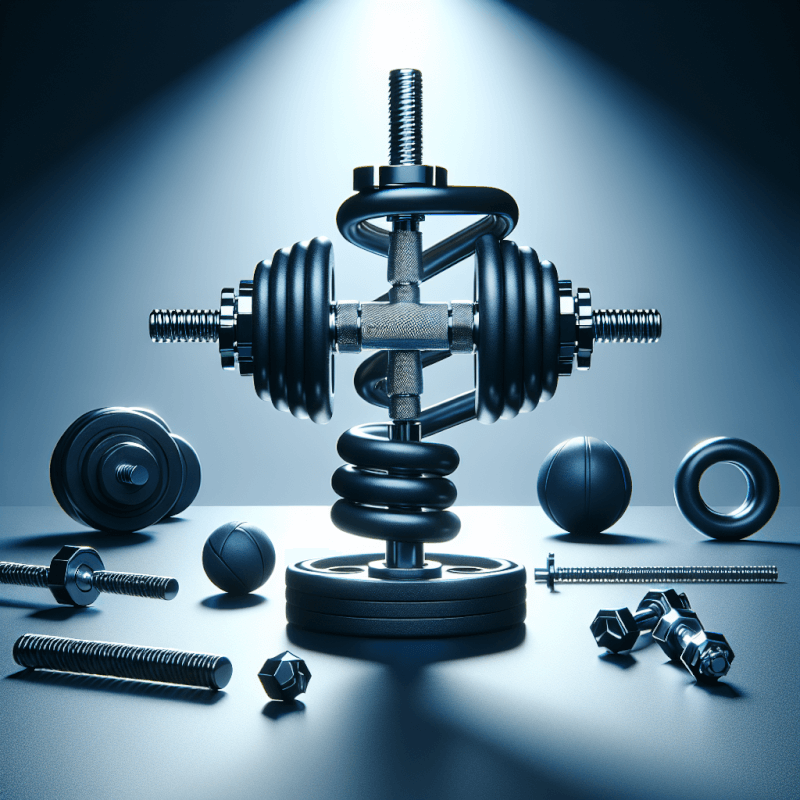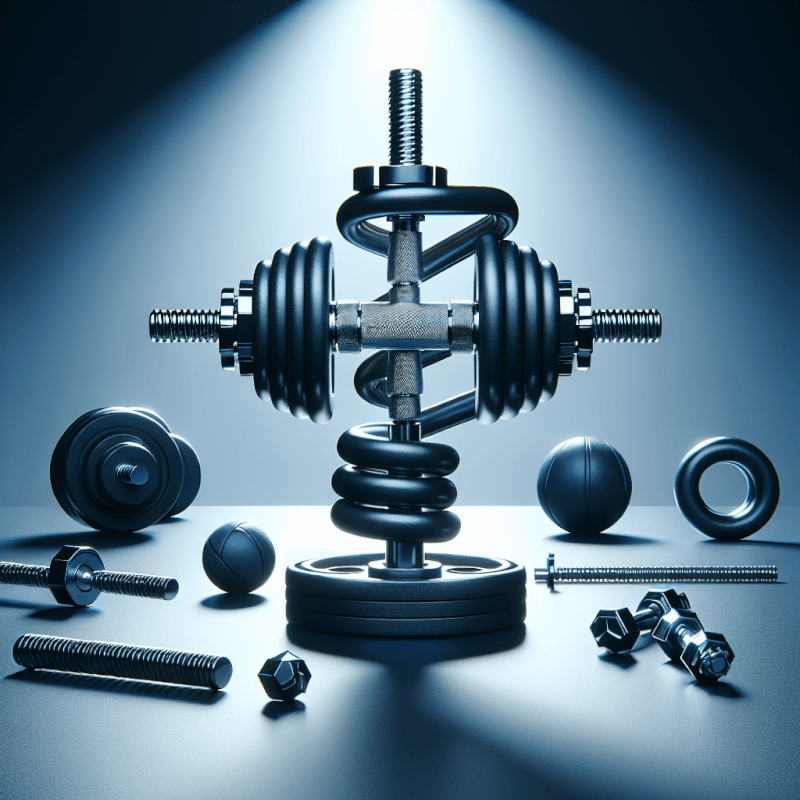Are you a fitness enthusiast who’s looking for ways to tailor your weightlifting routine to your age? It’s important to acknowledge that as we grow older, our bodies change, and we may need to adjust our workout routines accordingly. In this article, we will explore various strategies and tips on how to modify weightlifting routines to suit your age, ensuring that you can continue to stay fit, strong, and healthy throughout every stage of life.
Factors to Consider
Body Changes with Age
As you age, your body undergoes various changes that can impact your ability to engage in certain exercises. Muscle mass tends to decrease, bone density may decrease, and joints may become less flexible. Understanding these changes can help you tailor your weightlifting routine to suit your age and prevent any potential injuries.
Health and Medical Conditions
It’s important to consider your overall health and any medical conditions you may have when modifying your weightlifting routine. Certain conditions like arthritis, osteoporosis, or heart disease may require you to avoid certain exercises or modify them to prevent strain or injury. Consulting with your healthcare provider can provide valuable insight into what modifications may be necessary for your specific health needs.
Fitness Level
Your current fitness level plays a crucial role in determining how you should modify your weightlifting routine. If you are just starting out or have been inactive for a while, it’s important to gradually build up your strength and endurance to avoid overexertion. On the other hand, if you have been consistently active, you may need to challenge yourself with higher weights or more advanced exercises to continue progressing.
Consulting a Professional
Importance of Medical Advice
Before making any significant changes to your weightlifting routine, it is essential to seek medical advice. Your healthcare provider can assess your overall health and provide valuable guidance on what modifications would be appropriate for your age and specific conditions. They can also help monitor any changes in your health that may require further adjustments to your exercise program.
Finding a Qualified Trainer
Working with a qualified personal trainer who specializes in training older adults can be incredibly beneficial. They can help assess your fitness level, design a customized program tailored to your age and ability, and guide you through proper form and technique. Look for trainers who have experience working with older adults and are certified by reputable organizations.

Understanding Your Limitations
Assessing Strength and Flexibility
Before starting or modifying a weightlifting routine, it’s important to assess your current strength and flexibility. This will help you determine your starting point and identify any areas that may need extra attention. You can perform simple tests like measuring your grip strength or checking your range of motion to get an idea of your starting level.
Determining Joint Health
Assessing the health of your joints is crucial when modifying your weightlifting routine. If you have any existing joint conditions or experience pain or discomfort during certain movements, it’s important to be mindful of those limitations. Choose exercises that are joint-friendly and avoid any movements that exacerbate pain or discomfort.
Adapting the Program
Choosing the Right Exercises
When modifying your weightlifting routine, it’s important to choose exercises that are safe, effective, and appropriate for your age. Focus on compound movements that engage multiple muscle groups and promote functional strength. Avoid exercises that put excessive strain on your joints or require excessive flexibility.
Modifying Intensity and Duration
Modifying the intensity and duration of your weightlifting sessions is necessary when considering your age. Gradually increase the weight and intensity over time to prevent overexertion and reduce the risk of injury. Additionally, consider shorter, more frequent sessions rather than lengthy workouts to prevent excessive fatigue.
Incorporating Rest and Recovery
Proper rest and recovery are essential for any exercise program, regardless of age. As you age, it may take longer for your body to recover between workouts. Allow for adequate rest days and incorporate gentle activities like walking or stretching on those days to promote recovery and prevent overuse injuries.

Warm-up and Cool-down
Importance of Warm-up
A proper warm-up prepares your body for exercise by increasing blood flow to the muscles, loosening up the joints, and raising your body temperature. With age, it becomes even more crucial to perform a thorough warm-up to reduce the risk of injury and improve performance during your weightlifting routine.
Dynamic Stretching
Incorporating dynamic stretching into your warm-up routine can help further improve joint flexibility and range of motion. Dynamic stretches involve controlled movements that mimic the exercises you will be performing and gradually increase the range of motion. This type of stretching is more effective than static stretching for warming up the muscles.
Cool-down Techniques
After completing your weightlifting routine, it’s important to cool down to gradually bring your heart rate down and allow your muscles to recover. Performing gentle stretches and engaging in low-intensity activities can help prevent muscle soreness and improve overall flexibility. Cooling down also promotes a smooth transition from exercise to rest.
Strength Training Guidelines
Functional Movements
When weightlifting, focus on functional movements that mimic everyday activities to enhance your overall strength and improve your ability to perform daily tasks. Squats, lunges, deadlifts, and overhead presses are examples of functional movements that engage multiple muscle groups and promote functional fitness.
Proper Form and Technique
Maintaining proper form and technique is crucial when weightlifting, regardless of your age. When modifying your routine, pay extra attention to your form and technique to ensure you are performing the exercises correctly and safely. Proper alignment, controlled movements, and breathing techniques are key elements of proper form.
Resistance and Repetitions
Choosing the appropriate resistance and repetitions for your age is important to achieve optimal results. Start with lighter weights and higher repetitions to build endurance and gradually progress to heavier weights and lower repetitions to build strength. Listen to your body and choose weights that challenge you without compromising your form or safety.

Cardiovascular Exercise
Low-Impact Options
Incorporating low-impact cardiovascular exercises into your routine can help protect your joints and reduce the risk of injury. Activities like walking, cycling, swimming, or using an elliptical machine provide an excellent cardiovascular workout without placing excessive strain on your joints.
Interval Training
Interval training involves alternating periods of high-intensity exercise with periods of active recovery. This type of training can be beneficial for older adults as it can help improve cardiovascular fitness, boost metabolism, and increase overall endurance. However, it’s important to gradually introduce interval training and listen to your body to avoid overexertion.
Monitoring Heart Rate
Monitoring your heart rate during cardiovascular exercise is crucial to ensure you are exercising at an appropriate intensity. As you age, your maximum heart rate may decrease, so it’s important to adjust your target heart rate zone accordingly. Use a heart rate monitor or check your pulse regularly to ensure you are within your target range.
Flexibility and Mobility
Stretching Routine
Incorporating a regular stretching routine into your exercise program can help improve flexibility and mobility. Stretching exercises like toe touches, shoulder rolls, and calf stretches can help maintain or improve your range of motion and prevent muscle imbalances. Aim to stretch all major muscle groups, holding each stretch for 15-30 seconds.
Yoga and Pilates
Yoga and Pilates are excellent forms of exercise for improving flexibility, balance, and core strength. These practices focus on controlled movements, proper breathing, and mindfulness. Look for classes specifically designed for older adults or seek out qualified instructors who can modify the exercises to suit your individual needs.
Foam Rolling
Foam rolling is a self-myofascial release technique that can help alleviate muscle tension and improve mobility. Using a foam roller, you can target specific muscle groups and apply gentle pressure to release tightness and knots in the muscles. Incorporating foam rolling into your routine can help improve flexibility and prevent muscle imbalances.

Nutrition and Hydration
Balanced Diet for Aging Well
Eating a balanced and nutritious diet is crucial for overall health and well-being, especially as you age. Focus on consuming a variety of fruits, vegetables, whole grains, lean proteins, and healthy fats. Limit processed foods, sugar, and unhealthy fats. Consult with a registered dietitian to develop a personalized meal plan to support your weightlifting routine and promote healthy aging.
Importance of Protein
Protein plays a vital role in maintaining muscle mass and promoting muscle recovery after weightlifting. As you age, your protein needs may increase to offset the natural decline in muscle mass. Aim to include a source of lean protein in each meal, such as chicken, fish, tofu, beans, or Greek yogurt.
Adequate Hydration
Staying hydrated is crucial for optimal performance and overall health, regardless of your age. Adequate hydration helps regulate body temperature, transport nutrients, lubricate joints, and flush out waste products. Aim to drink water throughout the day and increase your fluid intake before, during, and after exercise to prevent dehydration.
Listening to Your Body
Recognizing Pain and Discomfort
As you engage in your weightlifting routine, it’s important to listen to your body and recognize any signs of pain or discomfort. While some muscle soreness is expected, sharp or prolonged pain could indicate an injury or overexertion. If you experience any pain during or after exercise, it’s important to rest, modify the exercise, or seek medical attention if necessary.
Adjusting the Routine
Your weightlifting routine should be flexible and adaptable to your body’s needs. As you age, you may need to adjust the exercises, intensity, or duration to accommodate changing fitness levels or health conditions. Regularly reassess your routine and make adjustments as needed to ensure you are progressing safely and effectively.
Staying Consistent
Consistency is key to achieving and maintaining optimal fitness levels as you age. Stick to a regular exercise routine, even if it means adjusting your exercises or intensity. Regular physical activity can help improve strength, flexibility, cardiovascular health, and overall well-being. Aim for at least 150 minutes of moderate-intensity aerobic exercise and two or more days of strength training per week.
In conclusion, modifying weightlifting routines to suit your age requires careful consideration of various factors. Understanding body changes, assessing health conditions, and evaluating your fitness level are essential. Consulting with medical professionals and qualified trainers can provide valuable guidance. Adapting exercise programs, incorporating warm-ups and cool-downs, and choosing the right exercises are crucial for safe and effective workouts. Additionally, focusing on strength training, cardiovascular exercise, flexibility, and proper nutrition are vital. Listening to your body, adjusting the routine, and staying consistent are key to long-term success. By tailoring your weightlifting routine to suit your age, you can enjoy the numerous benefits of exercise while minimizing the risk of injury.



